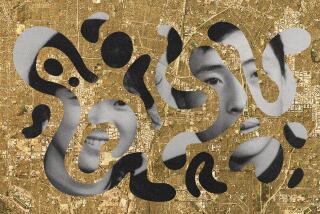Mail-Order Bride Business Booming Despite Seattle...
SEATTLE — The ads promise “Pearls of the Orient -- Beautiful, English-speaking, want to write to you” and “Gorgeous Pacific Women! Pen Pals, romance!”
The catalogues offer pages and pages of women’s pictures, ranging in style from cheesecake to high school annual, each accompanied by a name, age, height, weight, education and a brief statement.
“I am kind, sincere and sociable. I like music, theater and nature. I would like to meet an intelligent and reliable man under 45. I’ll be a faithful and tender wife to him,” a 23-year-old Russian sales assistant wrote.
It’s another road to romance in the 1990s. By any name--mail-order marriage, picture-book bride, pen-pal romance or marital-introduction service--more than 100 operators are bringing thousands of women into the United States.
By one estimate, 5,000 a year come from the Philippines. Some reckon at least as many come from Russia and Eastern Europe. Industry magazines also list women from Indonesia, Korea, Malaysia and other countries.
This isn’t new. When there were too many men and not enough women on the American frontier, matches were made by mail.
Many of those marriages ripened into love, historian Murray Morgan of Tacoma said. Likewise, mail-order marriage purveyors of today say most of theirs turn out well, a claim impossible to verify or disprove.
The business is largely unregulated, unmonitored and unstudied, said Cecilia Julag-ay, who is studying it for her doctoral thesis in sociology at the University of California at Riverside.
“Basically, very, very little is known,” Julag-ay said. “There needs to be a serious, quantitative study done . . . as to what happens once they get here.”
Immigration activists attack mail-order marriage as an easy avenue toward citizenship through fraud. Women’s rights advocates say it leads to exploitation and abuse of vulnerable young women. Some observers stereotype male customers as losers unable to handle partnership with a peer.
Even the harshest critics, however, were shocked by the courthouse shooting deaths of Susana Remerata Blackwell, 25, a native of the Philippines, and two friends who had testified for her in a Seattle divorce case March 2.
Her husband, Timothy Craig Blackwell, 47, a computer laboratory technician, is charged with three counts of aggravated first-degree murder.
The Blackwells met through an ad with her picture in Asian Encounters, a now-defunct publication. They began exchanging letters in the fall of 1991.
Timothy Blackwell, never previously married, went to meet Susana in 1993. About a month later, they were married in a big, traditional ceremony in her home town, Cartaingan, on an island southwest of Luzon.
She arrived in this country and moved in with her husband on Feb. 5, 1994; 10 days later she left him, saying he hit, choked and threatened her.
He denied any abuse. During their divorce proceedings, he testified that she was cold, refused to have sex and tricked him into marriage for his money and access to U.S. citizenship. He demanded that she repay the more than $10,000 he said he had spent to meet, court and marry her.
There have been a handful of other, similar cases in this country. In Australia, the killing of at least a dozen Filipinas in four years prompted a 1991 campaign for immigration-law changes, including background checks on men bringing foreign wives into the country.
Marriage brokers in Japan have turned to China, the Philippines and Korea for brides for middle-age farmers, shunned by Japanese women because of their austere lifestyle. The imported wives often are treated as servants, say workers at HELP, a women’s support group in Tokyo.
Some women using marriage to emigrate to northern Europe reportedly have been forced into prostitution.
A ban on advertising and other commercial soliciting of women for marriage to foreigners, imposed in the Philippines and a few other countries since the late 1980s, has been largely ineffectual.
Professional matchmakers insist the horror stories are exceptions.
“We get testimonials on practically a daily basis,” said Bob Burrows, owner of Cherry Blossoms. “I’d say less than 1% of the letters we get are negative.”
Every two months, from an office in Hawaii, he publishes pictures of about 500 women seeking husbands and sells women’s addresses to about 2,000 men.
About half the women are Filipinas. Indonesians rank next, but the biggest increase in recent years has been from Russia and Eastern Europe, Burrows said.
The Cherry Blossoms catalogue is free. Addresses cost $10 each or $395 for a one-year subscription with 3,000 addresses.
A man typically pays $3,000 to contact, visit, marry and bring a woman home, Burrows said. He estimated about 10,000 marriages have resulted from Cherry Blossoms connections.
Asian American Worldwide Services, a similar business in Lompoc, Calif., is operated by Tessie Florence, who entered the United States in 1980 as a pen-pal bride.
Seeing an advertisement in a newspaper in the Philippines, she wrote a two-page letter that brought a 10-page reply from the man who placed the ad, a space-flight engineer six years her elder.
“He wrote, ‘I am overweight and divorced and so on,’ and I thought that was an honest confession,” she said. “The chemistry started to build up.”
At the urging of friends, he started the business but died 5 1/2 years after their wedding.
“It was a fantastic marriage,” she said.
More to Read
Sign up for Essential California
The most important California stories and recommendations in your inbox every morning.
You may occasionally receive promotional content from the Los Angeles Times.










